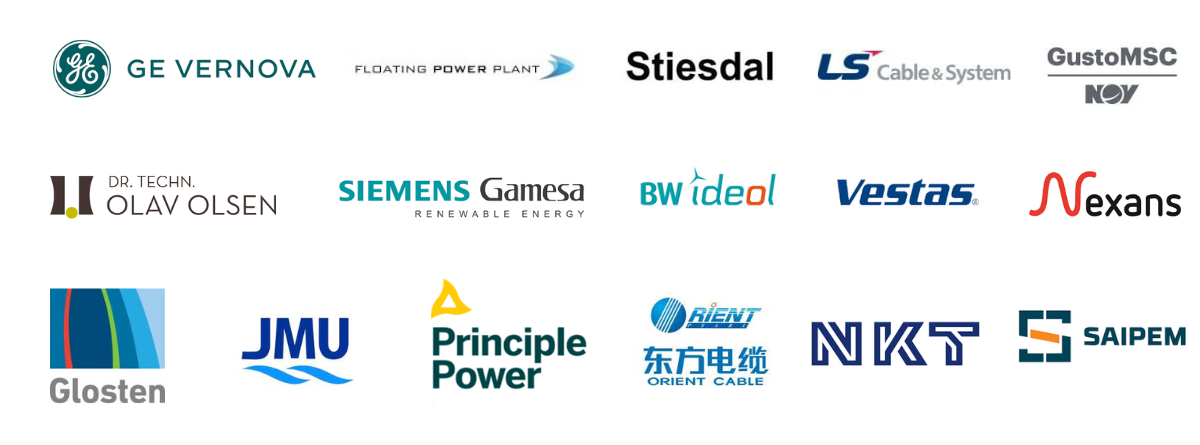For offshore wind to meet growing demand for renewable energy, the industry must expand. In certain new and emerging offshore wind markets, there is limited potential for fixed-bottom projects and floating wind is required. Sites further from shore also tend to benefit from more consistent wind resource, meaning floating wind can deliver higher yields.
A commercial future for floating
The Floating Wind JIP is a world leading collaborative R&D initiative between the Carbon Trust and 16 leading international offshore wind developers (bp, EDF Renouvables, EnBW, Equinor, Kyuden Mirai Energy, Ocean Winds, Parkwind, RWE Renewables, ScottishPower Renewables, Shell, Skyborn Renewables, SSE Renewables, TEPCO, Tohoku Electric Power Company, Total Energies and Vattenfall), created to overcome the challenges and investigate the opportunities of developing commercial-scale floating wind farms. Since its formation in 2016, the JIP has delivered numerous studies outlining the critical needs for the sector to reach cost parity with other low carbon energy sources, and run innovation competitions to support the development of viable technologies with the potential to meet some of these needs. The Floating Wind JIP’s work is prioritised around industry-identified innovation needs and includes projects in the following areas:
- Asset integrity
- Electrical systems
- Foundations
- Logistics
- Mooring systems
- Windfarm optimisation
Stage 3 Phase I report
Read the latest from the Floating Wind JIP in the Stage 3 Phase I summary report. This report outlines the progress made in tackling key technical challenges and highlights the innovation still needed to accelerate the deployment of commercial scale floating offshore wind.
History of the Floating Wind JIP
Stage 1
Stage I of the Floating Wind JIP began in 2016, and its workstreams included:
- Policy and regulation: outlining the policy and regulatory requirements for the floating wind industry
- Cost sensitivity analysis: assessing the current and expected future cost of floating wind, including sensitivity attributed to changing environmental and technical parameters
- Technology and risk: assessing technology risks to developing, constructing, and operating a floating wind farm, together with identification of key innovation needs.
These projects identified several critical focus areas that needed to be addressed to commercialise floating wind technology.
Stage 2
Stage II was launched in 2017 and undertook more detailed assessments of key technology challenges common to multiple floating wind concepts and to support innovation to develop the solutions needed for large-scale floating wind arrays. Across five Phases in Stage II, the programme delivered 20 technical studies and two industry competitions: the Dynamic Export Cable Development competition and the Floating Wind Technology Acceleration competition. The fifth and final Phase of Stage II finished in 2023 – details of the projects covered in each phase of Stage II are available via the links at the top of this page.
Stage 3
Stage III was launched in 2022 and is focused on overcoming technological challenges and advancing the commercialisation of floating offshore wind. While the main priority areas of the programme have remained the same, the focus is shifting from early-stage technological innovation to wide-scale commercialisation of floating wind technology. Work on Stage III projects is already underway – more information on the projects in this phase can be accessed via the link at the top of the page.
Tenders
Ongoing tenders for projects under the Floating Wind JIP will be posted on our tenders page.
Floating Wind JIP Partners

Floating Wind JIP Advisory Group
Since Stage II - Phase IV, the Floating Wind JIP has been supported by an Advisory Group comprised of leading floating wind platform developers and turbine manufacturers. The Advisory Group members provide input and feedback on technical assumptions and support the definition of component and technology requirements for generic floating wind projects.



